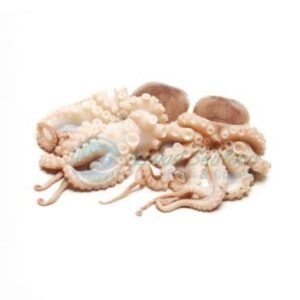Oyster
₨ 799
Oyster, A mollusk from the Arabian Sea that is high in nutrients and low in calories.
The size you receive: Typically range in size from 2 to 5 inches. Other sizes, however, are sporadically accessible as well.
Note: The weight of the seafood before cleaning or cutting determines all of our rates and billings. The cleaning you select will determine the net weight at delivery time.
Introduction
The term “Arabian Sea Oyster” describes a number of distinct groups of saltwater bivalve mollusks that dwell in brackish or marine environments. Some species’ valves have a significant degree of calcification, and many of them have fairly atypical shapes.
Since the Stone Age, people have harvested oysters for human consumption. They were also transported aboard ships as a source of fresh food. It has therefore been moved through natural biological barriers for hundreds, if not thousands, of years.
Numerous vitamins and minerals, such as zinc, calcium, magnesium, protein, selenium, and vitamin A, are present in oysters. Additionally, they have particularly high concentrations of iron, vitamin B12, and monounsaturated fat, which is a “healthy” lipid also present in olive oil.
Taste Profile
Oysters shouldn’t have a strong fishy flavor, like other shellfish. Instead, they taste like the ocean and have a very mild fish flavor, with different mineral overtones according on the kind. Even while raw don’t naturally have a flavorful taste, they are frequently served with sauce or lemon, which enhances their flavor.
Nomenclature
English Names: Oyster, Leaf Oyster, Slipper Cupped Oyster
Names used locally: Khappo, Kadda, and Khar Kunt
Ostreidae is their scientific name.
Habitat
The Arabian Sea oysters gather on old shells, rock, piers, or any other hard, submerged surface in coastal waters that are brackish or salty. As they expand, they join together to form reefs that resemble rocks and serve as home for other marine life and plants.
Catching Technique
Watermen gather wild oysters using a variety of techniques, primarily dredges (triangular rakes with nets pulled behind oystering boats) or tongs (scissor-like rakes used manually or with a mechanical system to collect them).
Physical Qualities
Bivalves, sometimes known as oysters, are a group of freshwater and marine mollusks with long, flat bodies covered by a shell with two hinges. Gills and cilia are used by this to filter water and eat. They lack a central nervous system but do have a little heart and other internal organs.
Appearance
They often have an oval or pear shape, however their shape can vary greatly depending on what they are attached to. Their internal shell is often porcelain white, while their outside shell is typically whitish-gray. They can seal their shells when attacked because to their incredibly powerful adductor muscles.
Size
It can be typically ranges in size from three to five inches. Other sizes, however, are sporadically accessible as well.
Choosing to clean
The outer shells should next be scrubbed with a scrub brush or a clean toothbrush to remove any dirt or debris. Discard any of that have previously been broken open if you find any.
Cleaning Yields, about.
Whole: 100%
10% or so of the meat is edible.
Favorite Recipes
It can be prepared in a variety of ways after being taken out of their shell, including grilling, baking, steaming, and grilling. It can be cook quickly and easily, therefore broiling or frying is preferred over high heat or low heat. Overcooking will cause them to become tough.
Health Advantages
Copper, zinc, manganese, and vitamin D are all abundant in it. These micronutrients are regarded to be essential for preventing or at least slowing bone loss in older women with osteoporosis when combined with calcium. Furthermore, it is believed that dietary sources of these minerals are more efficient than supplementation.
Keywords : oyster, oyster health benefits
Only logged in customers who have purchased this product may leave a review.
Another city delivery depends on locations
Delivery available through Bus, Train, and Plane

 Fish Boneless
Fish Boneless Spicy Masala (Ready to Cook)
Spicy Masala (Ready to Cook)






Reviews
There are no reviews yet.